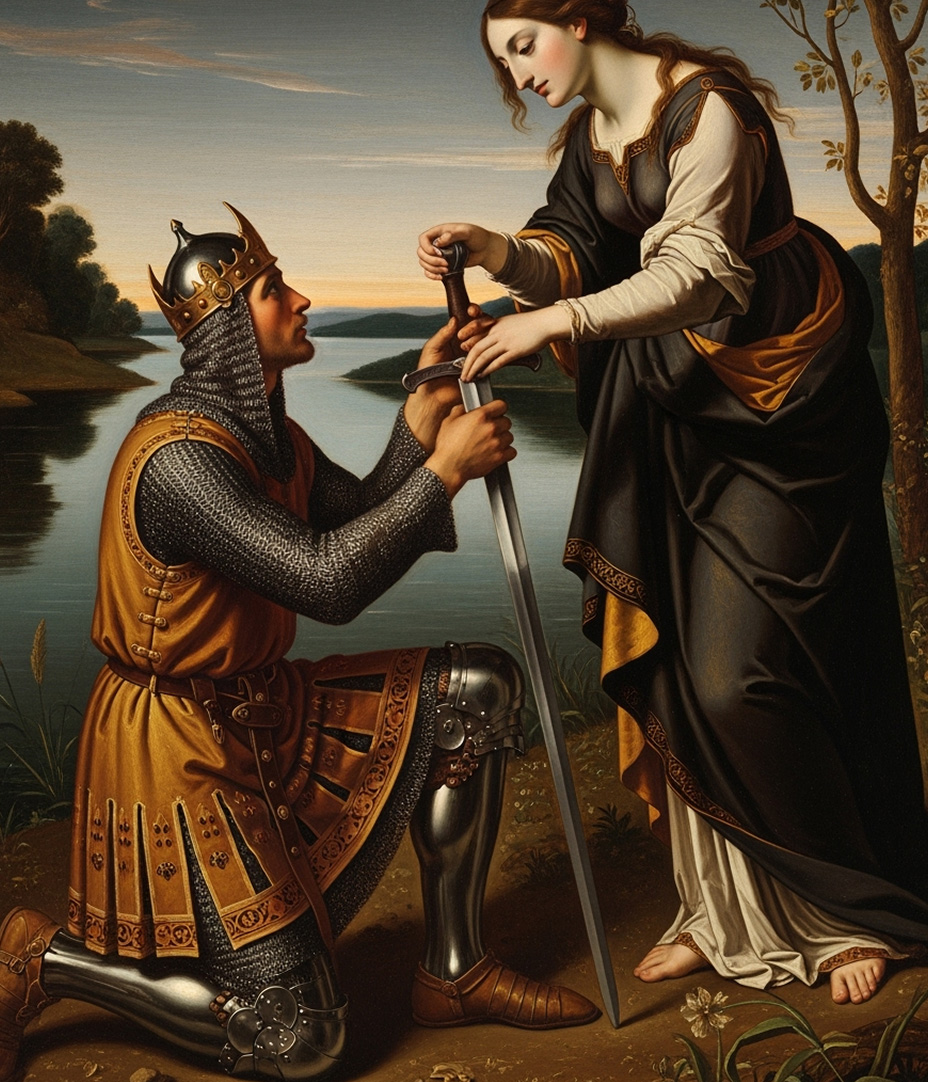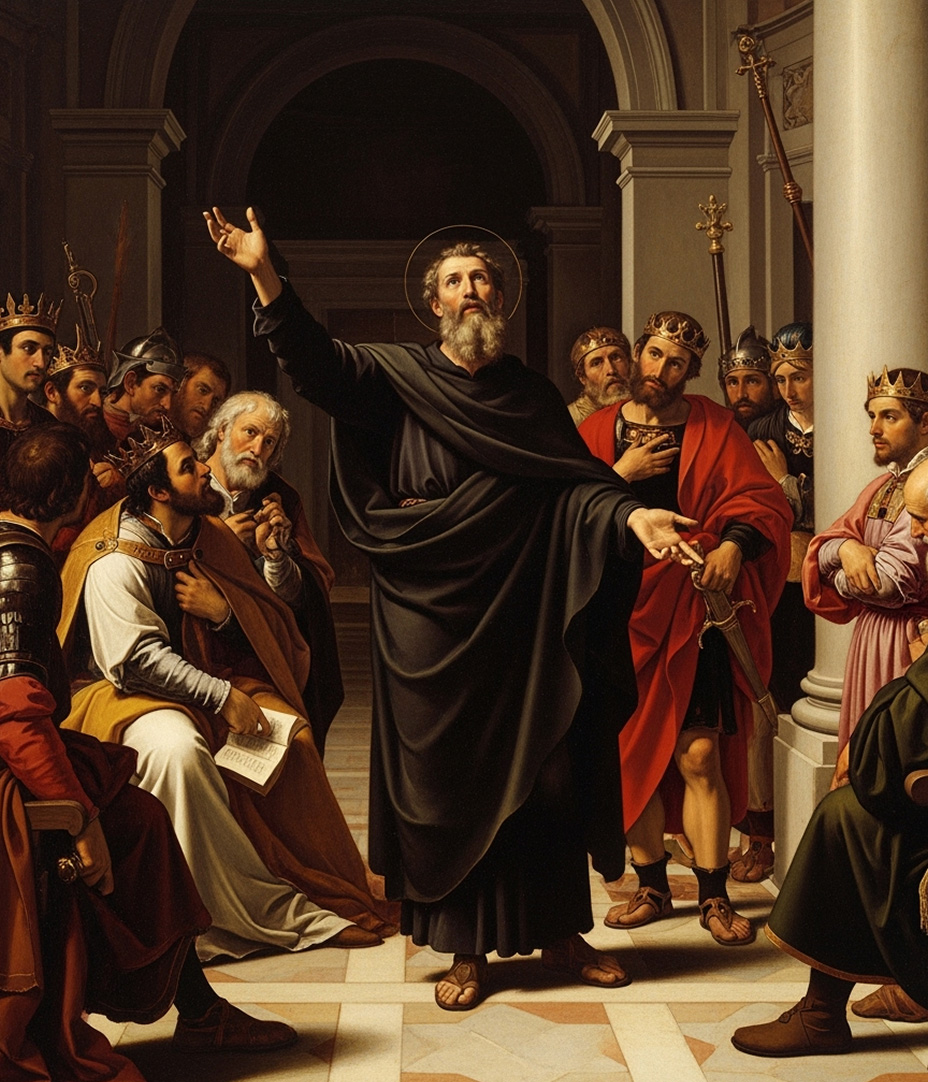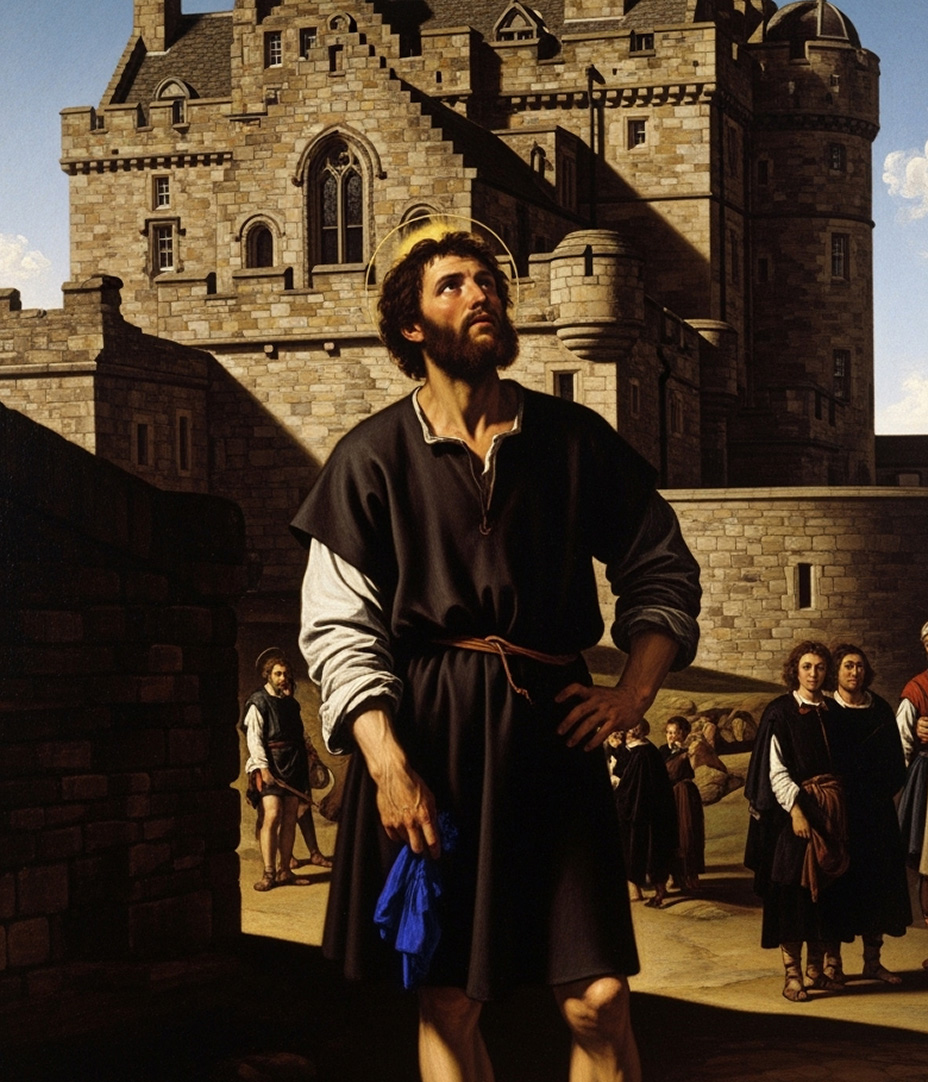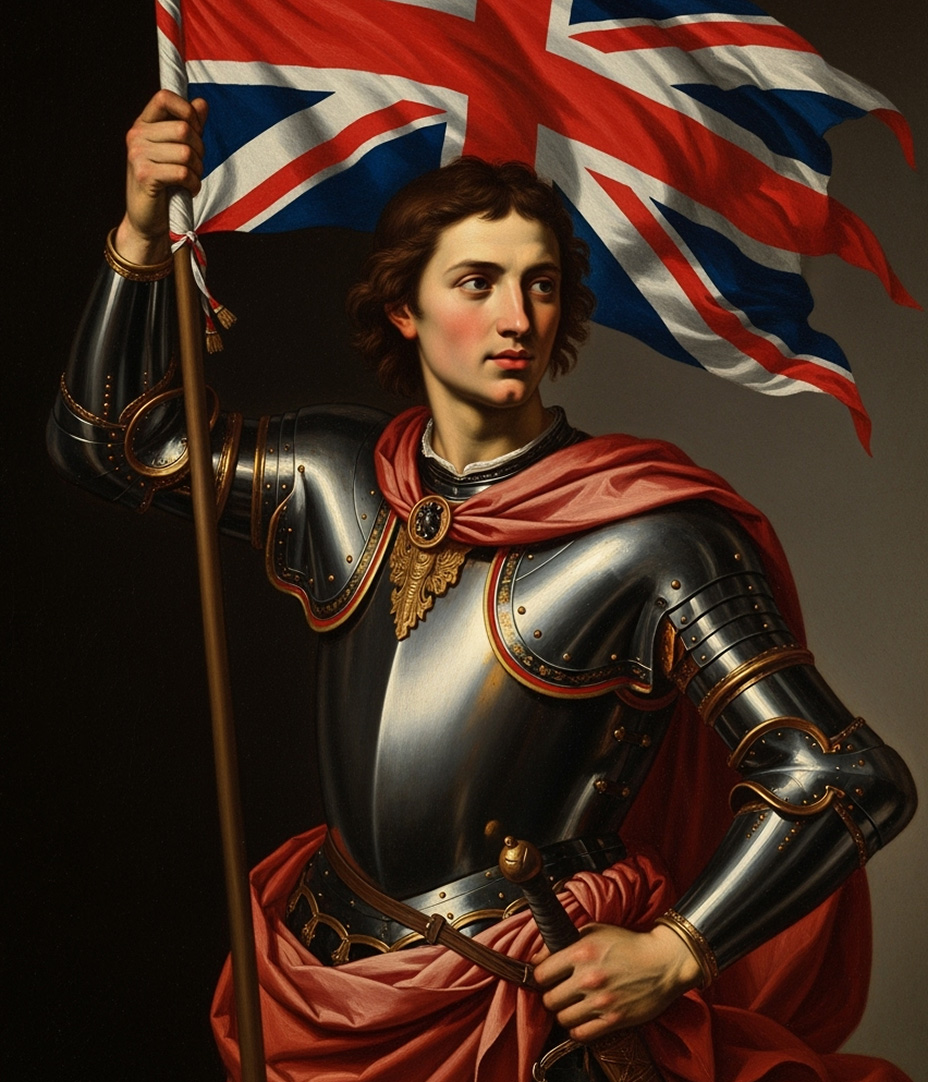We honor the four greatest figures who have shaped the spiritual and mythic soul of the British Isles. King Arthur, the Grail King, stands as a legendary protector of virtue and a symbol of Christ-like kingship. Saint Patrick, Apostle to the Kings of Ireland, brought the fire of faith to ancient thrones. Saint Andrew, first-called of the Apostles, gave Scotland its cross and its quiet strength. Saint George, the soldier-saint, became England’s heavenly knight and enduring banner of courage.
Together, they form a constellation of holiness, heroism, and hope—reminding us that nations, like souls, are shaped not only by power, but by the faithful who dare to seek the divine.
Prayer to Saint Patrick
O glorious Saint Patrick, Apostle to kings and shepherd of our Emerald isle, You walked into the courts of power with Christ in your heart And the fire of the Holy Spirit upon your breath.
Pray for Ireland, that we too may speak with courage,
Convert with compassion,
And reign with grace in whatever field we are sent.
May your faith that tamed chieftains
And turned thrones toward heaven,
Inspire our own bold witness on this day.
Amen.
Prayer to Saint Andrew
O Blessed Saint Andrew,
First-called and cross-borne,
You followed Christ with fisher’s hands
And bore your martyrdom in peace.
Stand with us when the sea is stormy
And when our strength is small.
Pray for Scotland and all who fly your banner,
That faith may root deeper than stone
And hope rise higher than the heather hills.
Amen.
Prayer to Saint George
O Blessed Saint George,
Soldier of Christ, slayer of evil,
Your courage shone brighter than any blade.
Though kingdoms rise and fall, your banner still waves,
A red cross of sacrifice, honor, and truth.
Stand beside us in every unseen battle.
Defend our hearts from fear and falsehood.
Pray for Britain, that her people may walk in courage,
And her soul be clad in honor.
Amen.

Arthur as the Keeper of the Blessed Sacraments
King Arthur, more than a warrior or ruler, is often seen as a Grail King—a figure whose reign is mysteriously tied to the health of the land and the soul of the people. In later medieval legends, especially in the romances of Chrétien de Troyes and Wolfram von Eschenbach, Arthur’s court becomes the sacred threshold from which the Quest for the Holy Grail is launched. Though not always the direct seeker, Arthur is the anchor of the Grail mythos—the one who gathers knights to pursue divine mystery, virtue, and restoration.
To call Arthur a Grail King is to recognize that he presides over a kingdom that reflects both glory and ruin, depending on the spiritual state of its king and court. The Grail itself—believed to be the chalice of the Last Supper or a vessel of divine grace—represents not just a holy relic, but the soul’s yearning for God.
Arthur’s wounds, his waiting, and his promise to return echo the themes of the Wounded Fisher King—another guardian of the Grail. Thus, Arthur becomes both the protector of sacred tradition and the symbol of its hoped-for return in an age of spiritual drought. He is not merely legendary; he is liturgical, a royal figure poised forever at the altar of Britain’s mythic memory, waiting for the moment when the cup is found, and the land is healed.

Saint Patrick: Apostle to the Kings of Ireland
Saint Patrick is often remembered for driving out snakes and teaching with shamrocks, but his true mission was far more profound: he was the Apostle to the Kings of Ireland. Sent not merely to convert peasants or monks, Patrick walked boldly into the presence of tribal chieftains and crowned kings, proclaiming the Gospel with courage and supernatural conviction.
When Patrick returned to the land of his former captivity, he carried with him not bitterness, but a burning desire to bring the light of Christ to Ireland’s ruling class. He preached before High King Laoghaire at Tara—the sacred seat of power—and though he faced hostility and druidic opposition, Patrick’s miracles and steadfast faith won hearts. From that moment on, one king after another welcomed baptism, and the fire of faith spread from hilltop to hillfort.
Patrick understood that to reach the soul of Ireland, he had to evangelize its leaders. By converting kings, he planted the cross not just in hearts, but in laws, customs, and culture. He anointed Ireland not with imperial conquest, but with holy conviction. In doing so, Saint Patrick became more than a missionary—he became a spiritual kingmaker, reshaping a nation by turning its thrones toward heaven.

Saint Andrew and the Saltire of Scotland
Saint Andrew, humble fisherman and first-called Apostle, bore his martyrdom with quiet strength. Refusing to be crucified in the same manner as his Lord, he was bound to a cross in the shape of an X—the crux decussata—and from that moment, his unique cross became a symbol of courageous faith, humility, and noble suffering.
Centuries later, it is said that in the year 832, as Scottish warriors faced overwhelming forces, a vision appeared in the sky: a white cross in the form of Andrew’s martyrdom, glowing against a blue backdrop. The victory that followed was attributed to Saint Andrew’s intercession, and from that day, the Saltire—his white diagonal cross on a field of blue—became the flag of Scotland.
Saint Andrew’s Saltire is more than a national emblem. It is a sacred reminder that Scotland was once dedicated to an apostle. His cross waves not as a boast of conquest, but as a banner of holy witness—a martyr’s mark chosen freely, borne faithfully, and honored forever.

Saint George The Martyr Knight
Saint George was a Roman soldier of noble bearing, yet it was not his sword that made him a legend—it was his faith. Refusing to renounce Christ before the emperor, George was martyred around the year 303, becoming a powerful symbol of Christian courage and loyalty unto death.
Centuries later, tales of his heroism—both real and legendary—spread across Christendom. The most famous story tells of a dragon defeated not just by blade, but by holy boldness, saving a kingdom and converting its people. Though the tale is allegorical, the truth behind it shines clear: George was a knight of Christ, slayer of evil, defender of the innocent.
In the Middle Ages, English crusaders adopted his red cross on white as their battle emblem, believing Saint George rode beside them into battle. By the 14th century, he was declared patron saint of England, not for slaying monsters, but for embodying a Christian warrior’s highest ideals—honor, sacrifice, and unwavering faith.
His banner—the red cross on a white field—still flies as a sign of spiritual valor and national devotion. Saint George is not merely England’s protector; he is Britain’s eternal standard-bearer in the fight for truth and righteousness.
In these noble lives—saint, apostle, and king—we find not just the memory of a realm, but the echo of a calling.
May their courage, humility, and holiness guide us still,
As we walk the winding path between myth and faith,
Bearing our own banners toward the light of Christ
𐡸
